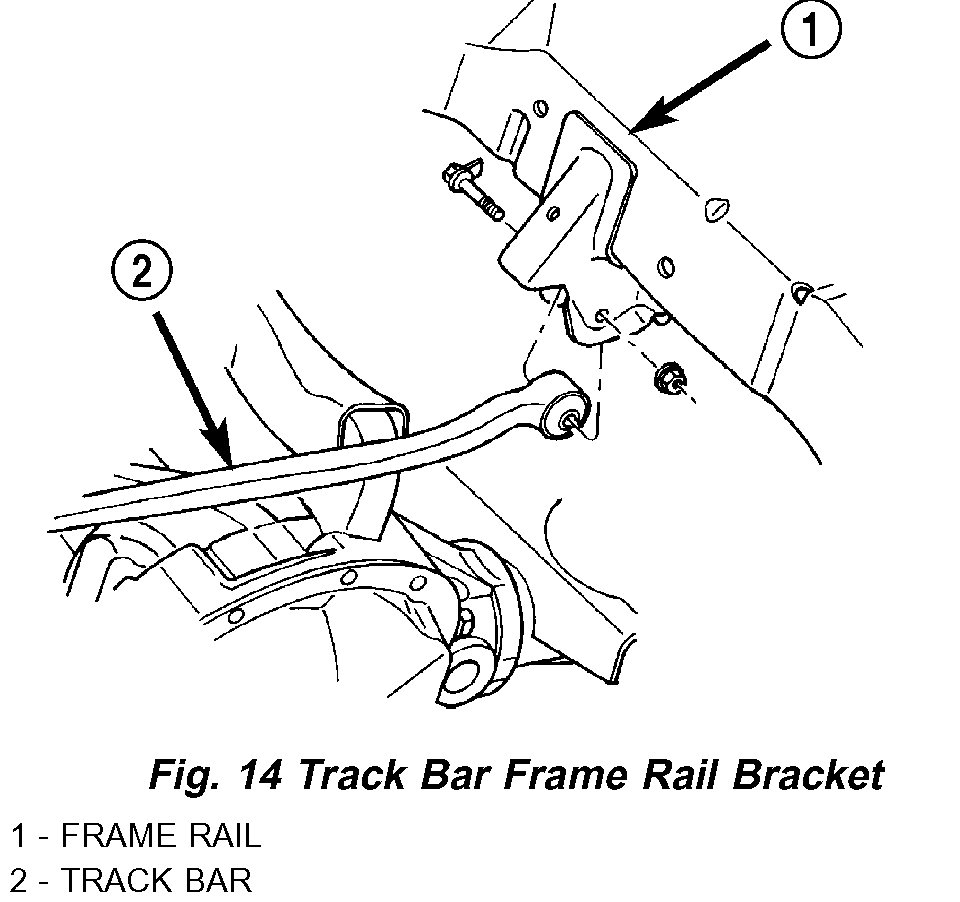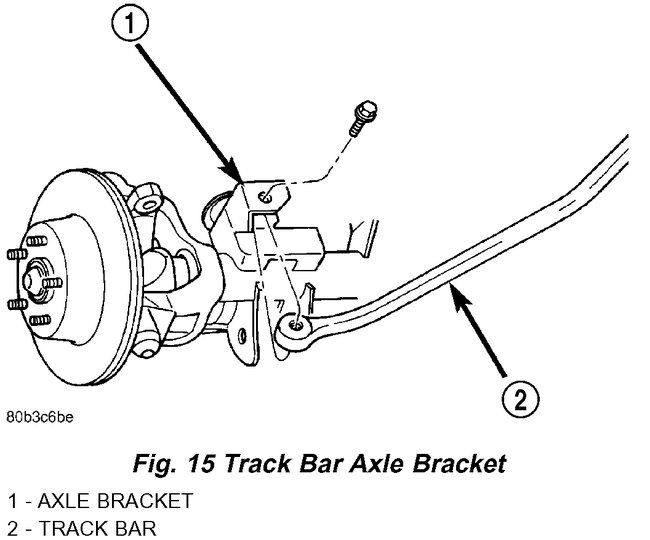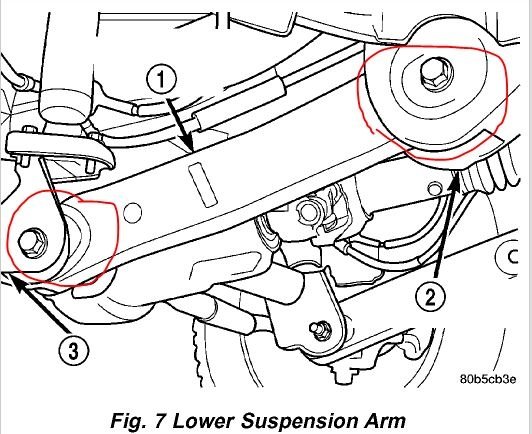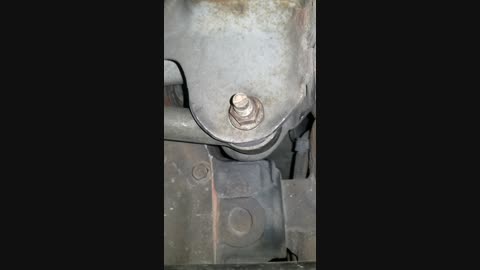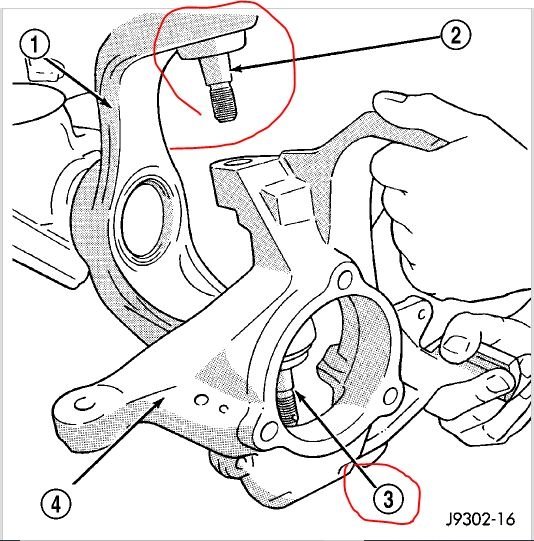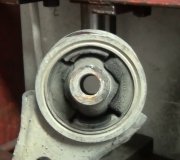Welcome to 2CarPros.
First, here are the directions for removing and replacing the tracking bar. The torque specs are included. Also, it should be on the ground when torqued.
PROCEDURES
REMOVAL
1. Raise and support the vehicle.
Picture 1
2. Remove the nut and bolt from the frame rail bracket.
Picture 2
3. Remove the bolt from the axle shaft tube bracket. Remove the track bar.
INSTALLATION
1. Install the track bar to the axle tube bracket. Install the retaining bolt finger tight.
2. Install track bar to the frame rail bracket. Install the bolt and nut finger tight.
NOTE: It may be necessary to pry the axle assembly over to install the track bar to the frame rail bracket.
3. Remove the supports and lower the vehicle.
4. With the vehicle on the ground tighten the nut at the frame rail bracket and to the bolt at the axle bracket to 100 Nm (74 ft. Lbs.).
5. Check alignment specifications if a new track bar was installed.
______________________________
There are several things that can lead to this condition. You have replaced many parts already. Other components to check include the following.
Ball joints
steering knuckle
worn bushings
Those are things you didn't mentioned. Also, are the upper control arms tight?
One other thing you didn't mention is the lower suspension arm bushings. I attached a pic of them. Have you checked them for play? See picture 3
As far as the play in the tracking bar, can you explain where you see the play? I have seen situations where the tracking bar mounting bolt to the frame has ob-longed the mount and allowed play. Check for that.
Let me know if any of this helps or if you have other questions.
Take care,
joe
Images (Click to make bigger)
SPONSORED LINKS
Tuesday, June 11th, 2019 AT 10:05 PM
